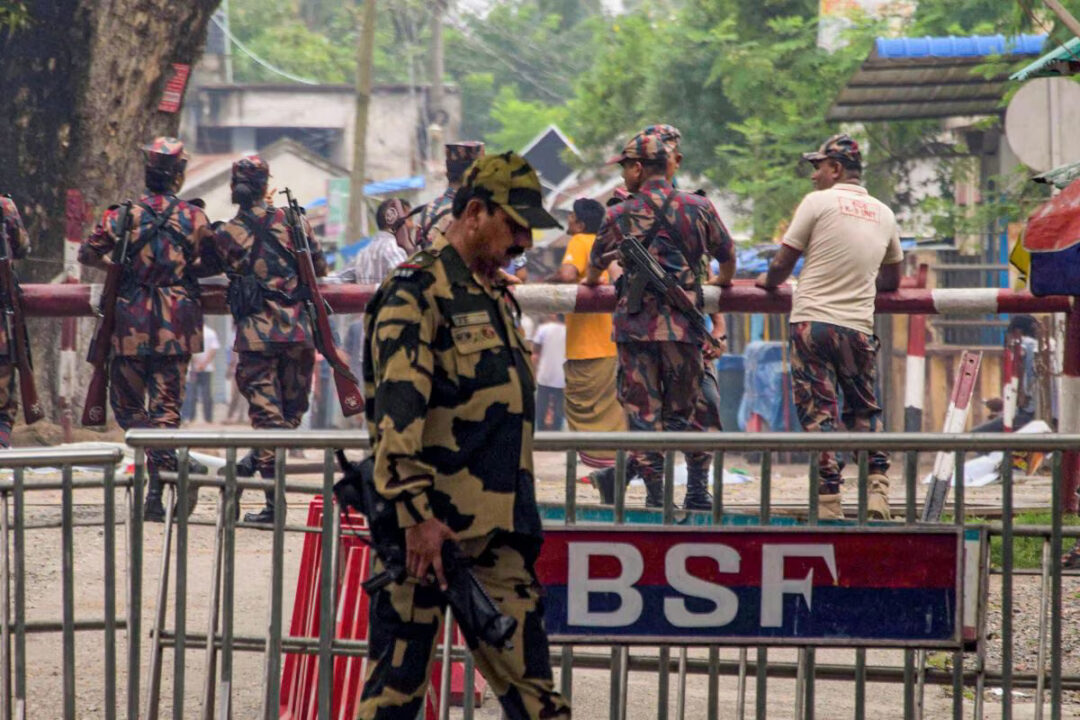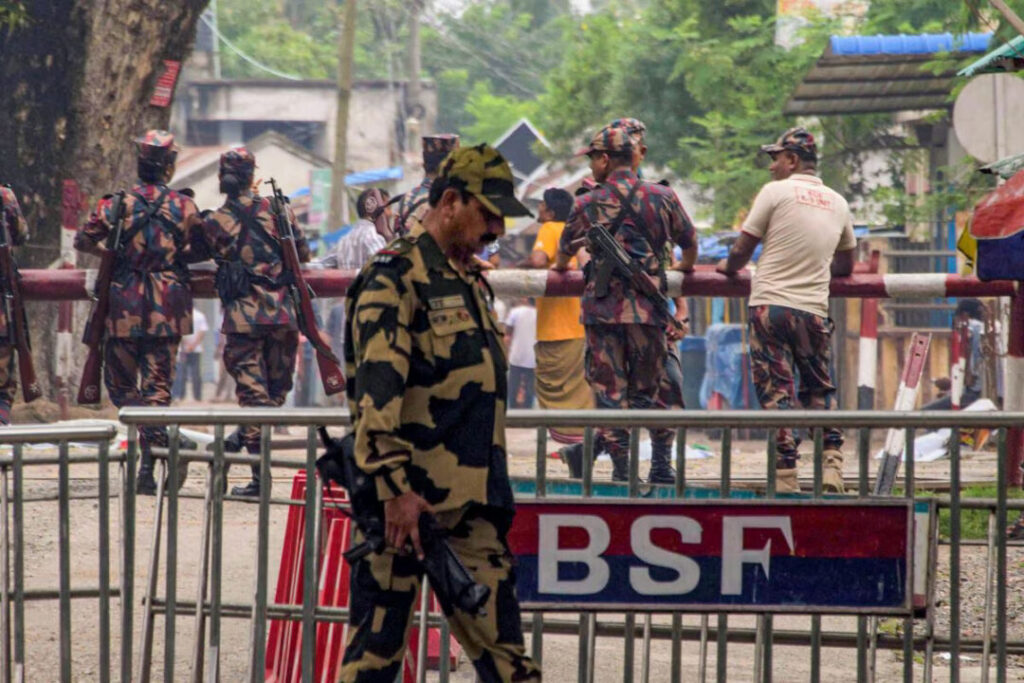Opinion | Beyond Border Protection: BSF’s Crucial Role In Disaster Management

With its resources, extensive knowledge of difficult terrain along the borders, and training in crisis management, the BSF is the natural first responder for disaster-affected populations in border areas
The Border Security Force (BSF) was established 59 years ago, on 1 December 1965, and was tasked with promoting a sense of security among border populations. The BSF achieves this by continuously patrolling the borders to prevent trans-border crimes and by providing security to people as they go about their daily routines near the border.

However, a lesser-known aspect of the BSF’s contributions is its role in supporting border populations during times of natural and other disasters. As the sole visible face of government authority in remote border areas, it is natural for the local population to expect the BSF’s assistance during emergencies. The BSF leverages its disciplined manpower, expertise, and resources to mitigate and manage natural and manmade disasters, playing a critical role in disaster management.
The BSF has performed this role admirably during numerous disasters, such as the Gujarat earthquake in 2001, where it was the first to provide aid to distressed people. Similarly, during the 2005 earthquake and the 2014 floods in the Kashmir Valley, BSF personnel and resources played a crucial role in evacuation efforts and providing medical relief to affected populations. The BSF’s Water Wing detachments also rendered yeoman’s service during the December 2004 tsunami.
(Read More: Chhatrapati Shivaji Statue Unveiled at 14,300 Feet Near India-China Border to Honor Legacy of Strategic Brilliance)
BSF rescue and medical response teams are deployed every year to provide coverage for the Amarnath Yatra. These teams comprise BSF personnel who have worked with the National Disaster Relief Force (NDRF). These troops are well-trained in Medical First Response (MFR) as well as Collapse Structure Search and Rescue (CSSR). The training of these troops is invaluable in stabilising pilgrims who need medical attention, providing first aid, CPR (Cardio-Pulmonary Resuscitation), and later evacuating them to nearby medical centres.
The BSF can assist in disaster management in various ways, including coordination with state and local civil authorities and various government agencies to ensure a coordinated response during disasters. For this purpose, the BSF participates in joint training exercises and simulations to enhance preparedness for disaster scenarios.
With its resources, extensive knowledge of the difficult, remote terrain along the borders, and training in crisis management, the BSF is the natural first responder for disaster-affected populations in border areas, thus becoming involved in rescue and evacuation efforts from the very beginning.
The strong medical setup of the BSF, consisting of doctors and paramedical staff deployed with each unit, is an invaluable resource in providing immediate medical assistance to victims, particularly in remote and inaccessible areas, before they are evacuated for advanced medical care by specialists. During the Covid-19 pandemic and other instances of disasters, these medical teams have done great work, saving numerous lives through immediate medical help and emergency medications. The Basic Life Support (BLS) and Advanced Life Support (ALS) systems available with the BSF are fully utilised to save precious lives. The BSF has procured and stationed several ambulances in border areas, which, in addition to being used for evacuations of needy border residents during normal times, prove extremely useful during disasters.
(Read More: Punjab: BSF Seizes Two Drones on Amritsar Border)
The BSF also provides infrastructure support in the form of temporary shelters, using resources such as tentage, etc., available to it. The BSF has been offering such assistance to the border population, especially in West Bengal, during floods and cyclones that occur regularly. Additionally, the BSF provides food and shelter within the Border Outposts (BOPs) to displaced victims.
The BSF’s expertise in logistics and communication management is of great assistance in restoring connectivity in disaster-affected areas. Equipment such as satellite phones, wireless sets, and trained manpower are capable of restoring and establishing communication networks in disaster-hit areas, which is of critical importance in coordinating the delivery of rescue materials and identifying the exact locations where they are needed.
The transport available to the BSF plays a significant role in delivering relief materials and resources to affected regions. The BSF air wing is also of immense use for reconnaissance of affected areas, air-dropping supplies, and evacuating stranded individuals. The BSF water wing resources have been extensively utilised for rescue and evacuation efforts for people affected by cyclones and floods. They were also effectively deployed in tsunami-affected areas.
In addition to the above Humanitarian Assistance and Disaster Relief (HADR) functions, the BSF also engages in community outreach programmes to educate local populations about disaster preparedness, response strategies, and risk reduction measures. For this purpose, they organise drills and training programmes to enhance community resilience.
The BSF can also be utilised for “Post-Disaster Recovery” by assisting in rebuilding efforts, such as restoring infrastructure and supporting the rehabilitation of affected communities. They can also assist in assessing damage and coordinating with other agencies for effective recovery.
Given its deployment in border areas, the BSF’s disaster management efforts naturally have a Border Area focus, where the impact of natural disasters can be more severe due to remoteness, geography, and infrastructure challenges. However, its capabilities and potential extend far beyond this, and it can be effectively deployed to help manage disasters in other areas.
Besides dealing with disasters near their areas of deployment, the BSF has made a significant contribution to the raising of the National Disaster Response Force (NDRF). Four BSF battalions, located in Delhi, Kolkata, Guwahati, and Patna, are part of the NDRF, a multi-disciplinary force capable of responding to disasters by air, sea, or land. The NDRF is equipped to handle all types of natural disasters, including chemical, biological, radiological, and nuclear (CBRN) disasters. The troops are seconded to these Disaster Management (DM) battalions from regular BSF battalions. Twenty per cent of these troops are repatriated to their parent battalions every year, and they also impart training to other troops in DM, thereby enhancing the BSF’s capabilities in dealing with disasters anywhere.
To train our troops for disaster response, they undergo DM training during their induction into the BSF. The training covers aspects of disaster response, rescue operations, first aid, and crowd management. Additionally, the BSF has an Institute for Disaster Response (BIDR) located at the BSF Academy in Tekanpur, Gwalior, for the preparedness and training of BSF personnel. The personnel repatriated from the NDRF are an important asset, as they further impart training to others within the BSF and also educate locals, familiarising them with response drills for specific disasters, in order to minimise loss of life and property. These drills include those for earthquakes, floods, and thunderstorms, among others.
The role of the BSF in disaster management is multifaceted, focusing on immediate response, rescue, recovery, and long-term resilience-building in communities, particularly in challenging and sensitive border areas. Their experience, manpower, and logistical capabilities make them an essential component of India’s disaster management framework.

Sanjiv Krishan Sood
Sanjiv Krishan Sood is Additional Director General, BSF (Retd). He tweets @sood_2. Views expressed in the above piece are personal and solely those of the author.


Leave a Reply